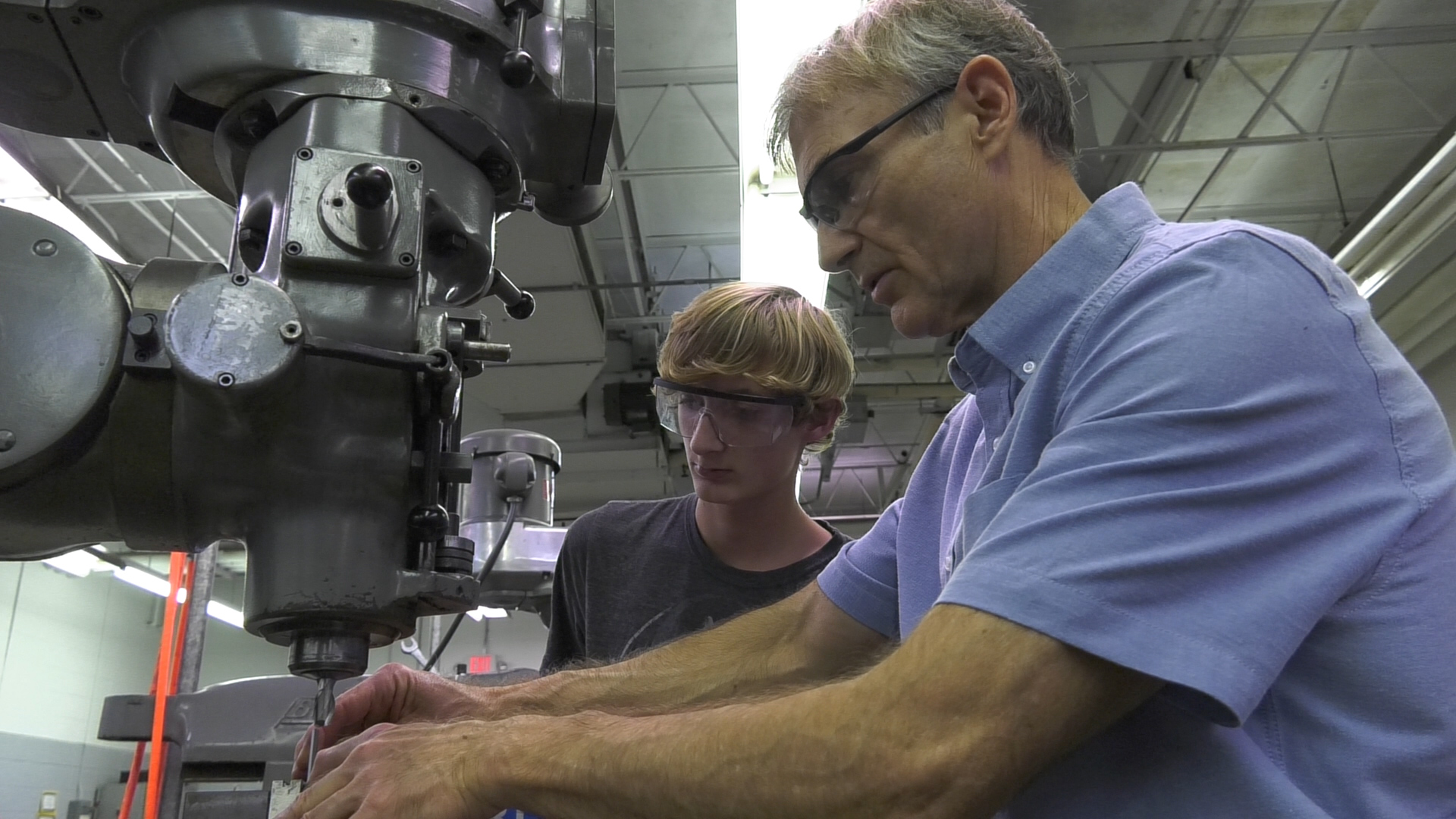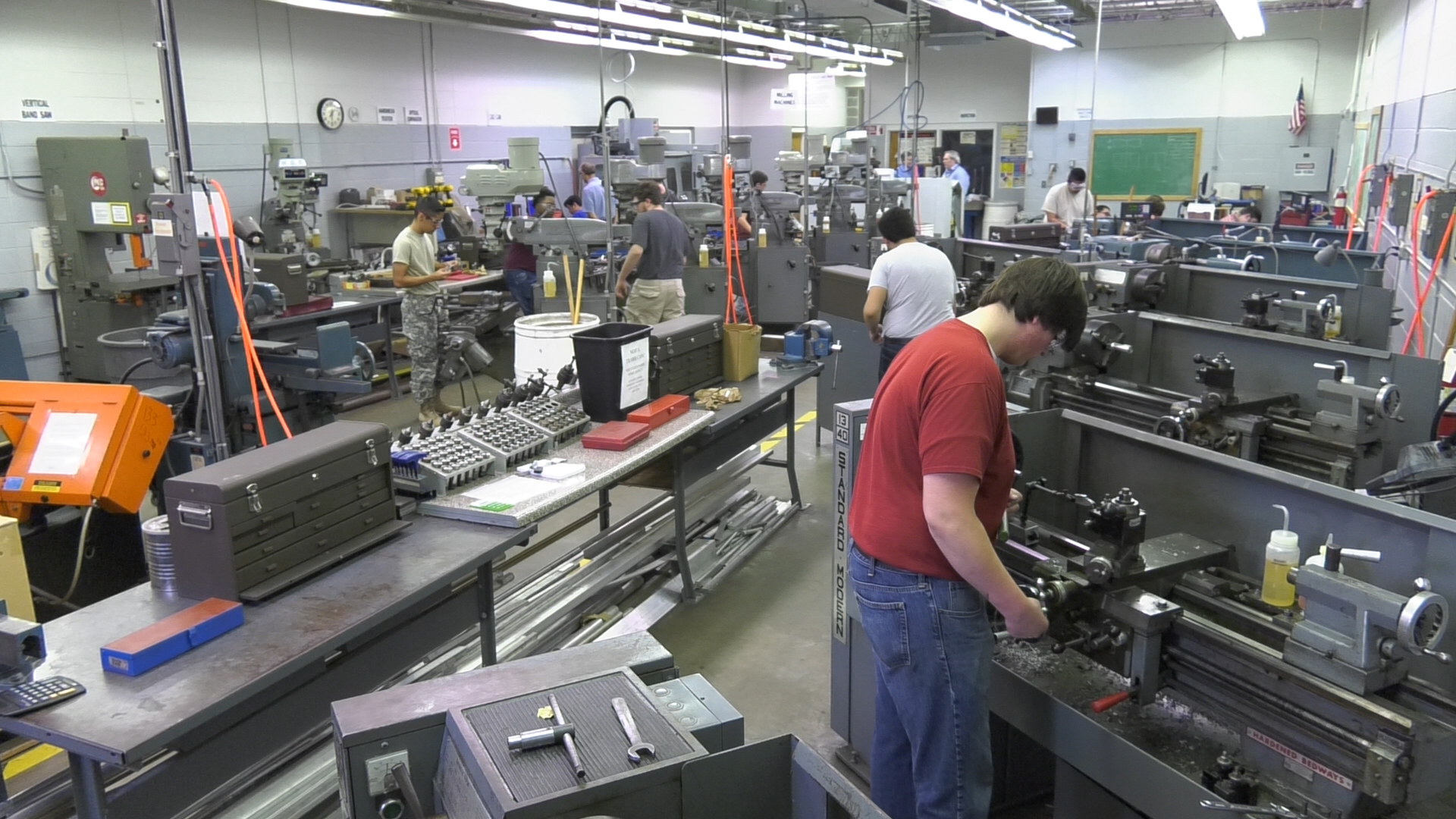Students at an Alabama high school have done so well in a NASA program that they are now making parts for use on the International Space Station.

For more than 50 years, NASA has sponsored programs to get students interested in the aerospace industry. One program called HUNCH — High Schools United with NASA to Create Hardware — challenges students to use machining, welding and other skills learned in class to build exact replicas of the hardware on the space station. These twin versions are added to full-sized models of the station on the ground. Astronauts and flight controllers use these mock-ups for ground training before a mission.
“We realized early in the station program that we needed a version on the ground before we flew in to space,” said Bob Zeek, HUNCH co-founder and program manager at NASA’s Marshall Space Flight Center in Huntsville, Alabama. “At the same time, we wanted to get kids who are good at machining, welding, or other technical skills involved with NASA. A four-year degree is good for some, but we need technical people, too. Machining, computer-aided-design drafting, welding, computer electronics – all the things we do in HUNCH are preparing these students for the future and helping the agency at the same time.”
HUNCH has been a part of the curriculum for the machine tool technology class at Austin High School in Decatur, Alabama, since 2010. Bill Gibson is the school’s Machine Tool Technology instructor and a fierce advocate for this kind of hands-on training.
“The first year of the program, we did a couple of simple designs for their training modules like locker panels and racks,” he said. “Every year, the students have gotten better, so we get more advanced and challenging designs.”

The program has brought students into his class who may not have initially considered machining as a career.
“It’s very rewarding for me and for these students,” Gibson said. “They are very enthusiastic and work very diligently on these projects. Motivation is not a problem. The thought of an astronaut putting their hands on the work they do in class really brings out their best.”
It was the consistent high quality of the work that made Zeek and the HUNCH program consider letting students take their talents to the next level. The students were challenged to build two items. One was a set of bolts that will hold lockers of scientific experiments in place on the space station. The other is a holder for a new brush cleaning tool for use during spacewalks. The tools were delivered to the space station on the tenth SpaceX cargo resupply mission, which launched Feb. 19, and the bolts are already used on assembled lockers that will launch on a future resupply mission.
“We use high-tech tools in our shop here. We’ve made things for NASA before, but this was a big step,” said Ryan Anthony, a senior at Austin High School. “I was nervous when I found out we would use hardened stainless steel. That’s when I knew this would be completely different learning experience for all of us.”
“It’s amazing,” he said, as a smile spreads across his face. “Not only are we making parts that will go to space, but these are parts that we built, as high school students, that will help an astronaut do his or her job.”
The next-level experience not only included manufacturing unique pieces of hardware, but also learning to use new high-tech tools, creating computer-aided design drawings, and dealing with extreme precision.
“We had tight specifications on how these parts had to be made, how they had to look,” Anthony said. “We had to measure and record every dimension for every part at every step and sign and date everything on these spec sheets. But we did it because it needs to be exactly how NASA needs it or else they can’t use it.”
HUNCH shows students the real-world application for the machining they perform in class, especially when it’s something with high risk implications.
“It’s a big deal – we make that clear to students right away,” said Gibson. “They understand and are given this responsibility at an early age and hopefully take that with them when they graduate and beyond.”
“The kids are excited and it gets them out of the textbook into real work,” said Zeek. “Plus, everything they do goes on their resume, and with NASA listed as experience, it just might help them get a job faster.”
The small pieces students are making are big steps in training the workforce that will help design and build the space-faring vehicles of tomorrow.
“I like seeing the light bulbs go on and watch students make that connection,” said Zeek. “It’s fulfilling to see them succeed.”

























